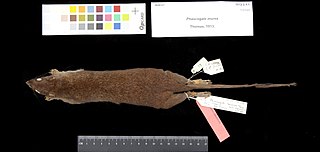
The hammerhead sharks are a group of sharks that form the family Sphyrnidae, so named for the unusual and distinctive structure of their heads, which are flattened and laterally extended into a "hammer" shape called a cephalofoil. Most hammerhead species are placed in the genus Sphyrna, while the winghead shark is placed in its own genus, Eusphyra. Many, but not necessarily mutually exclusive, functions have been postulated for the cephalofoil, including sensory reception, manoeuvering, and prey manipulation. The cephalofoil gives the shark superior binocular vision and depth perception.

The International Union for Conservation of Nature is an international organization working in the field of nature conservation and sustainable use of natural resources. It is involved in data gathering and analysis, research, field projects, advocacy, and education. IUCN's mission is to "influence, encourage and assist societies throughout the world to conserve nature and to ensure that any use of natural resources is equitable and ecologically sustainable".

The International Union for Conservation of Nature (IUCN) Red List of Threatened Species, founded in 1964, is the world's most comprehensive inventory of the global conservation status of biological species. It uses a set of precise criteria to evaluate the extinction risk of thousands of species and subspecies. These criteria are relevant to all species and all regions of the world. With its strong scientific base, the IUCN Red List is recognized as the most authoritative guide to the status of biological diversity. A series of Regional Red Lists are produced by countries or organizations, which assess the risk of extinction to species within a political management unit.

The pacarana is a rare and slow-moving hystricognath rodent indigenous to South America. Native Tupi people call it the pacarana because it is superficially similar to the paca, a different rodent which is not in the same family. The pacarana has a chunky body and is large for a rodent, weighing up to 15 kg (33 lb) and measuring up to 79 cm (31 in) in length, not including the thick, furry tail.

Murexia is a genus of mice-sized dasyure, in the marsupial order Dasyuromorphia. They are found in Papua, Indonesia and Papua New Guinea.

The eastern gorilla is a critically endangered species of the genus Gorilla and the largest living primate. At present, the species is subdivided into two subspecies. The eastern lowland gorilla or Grauer’s gorilla is more populous, at about 3,800 individuals. The mountain gorilla has only about 1,000 individuals. The International Union for Conservation of Nature mentioned illegal hunting in its assessment of threats to the species.

A species that is extinct in the wild (EW) is one that has been categorized by the International Union for Conservation of Nature as known only by living members kept in captivity or as a naturalized population outside its historic range due to massive habitat loss.

The wildlife of South Africa consists of the flora and fauna of this country in southern Africa. The country has a range of different habitat types and an ecologically rich and diverse wildlife, vascular plants being particularly abundant, many of them endemic to the country. There are few forested areas, much savanna grassland, semi-arid Karoo vegetation and the fynbos of the Cape Floristic Region. Famed for its national parks and big game, 297 species of mammal have been recorded in South Africa, as well as 858 species of bird and over 20,000 species of vascular plants.

The western lowland olingo is a species of olingo from Central and South America, where it is known from Panama and from Colombia and Ecuador west of the Andes.
Oreosaurus is a genus of lizards in the family Gymnophthalmidae. The genus is found in South America.
Oreosaurus luctuosus, the lightbulb lizard, is a species of lizard in the family Gymnophthalmidae. It is endemic to Venezuela.
Oreosaurus mcdiarmidi is a species of lizard in the family Gymnophthalmidae. It is endemic to Chimantá Massif in Venezuela. It is named for Roy W. McDiarmid, American herpetologist, "for his contribution to the knowledge of the Pantepui herpetofauna".
Oreosaurus rhodogaster is a species of lizard in the family Gymnophthalmidae. It is endemic to Venezuela.
Oreosaurus shrevei, known commonly as the luminous lizard or Shreve's lightbulb lizard, is a species of lizard in the family Gymnophthalmidae. The species is endemic to Trinidad and Tobago.









